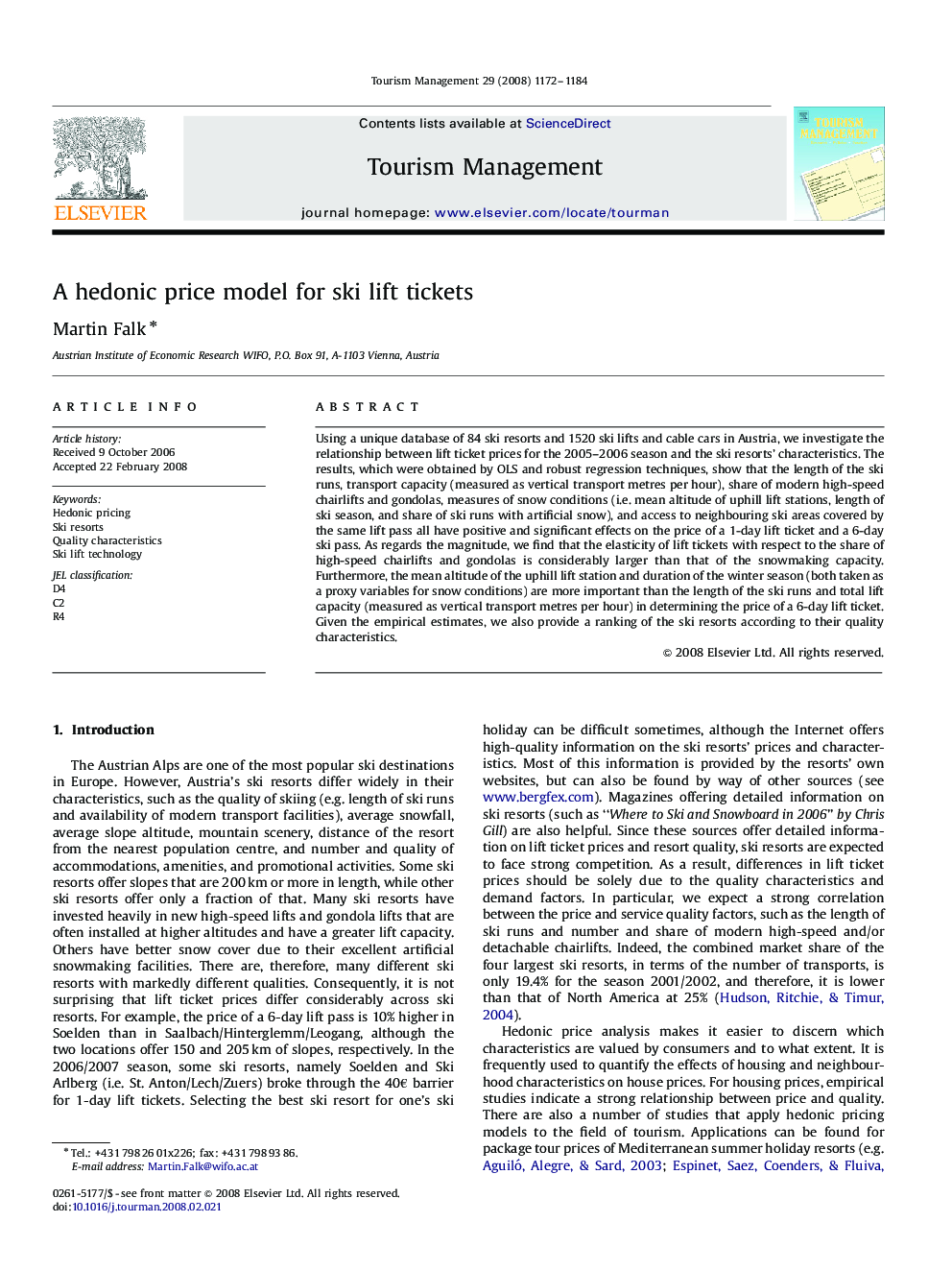| Article ID | Journal | Published Year | Pages | File Type |
|---|---|---|---|---|
| 1012998 | Tourism Management | 2008 | 13 Pages |
Using a unique database of 84 ski resorts and 1520 ski lifts and cable cars in Austria, we investigate the relationship between lift ticket prices for the 2005–2006 season and the ski resorts’ characteristics. The results, which were obtained by OLS and robust regression techniques, show that the length of the ski runs, transport capacity (measured as vertical transport metres per hour), share of modern high-speed chairlifts and gondolas, measures of snow conditions (i.e. mean altitude of uphill lift stations, length of ski season, and share of ski runs with artificial snow), and access to neighbouring ski areas covered by the same lift pass all have positive and significant effects on the price of a 1-day lift ticket and a 6-day ski pass. As regards the magnitude, we find that the elasticity of lift tickets with respect to the share of high-speed chairlifts and gondolas is considerably larger than that of the snowmaking capacity. Furthermore, the mean altitude of the uphill lift station and duration of the winter season (both taken as a proxy variables for snow conditions) are more important than the length of the ski runs and total lift capacity (measured as vertical transport metres per hour) in determining the price of a 6-day lift ticket. Given the empirical estimates, we also provide a ranking of the ski resorts according to their quality characteristics.
